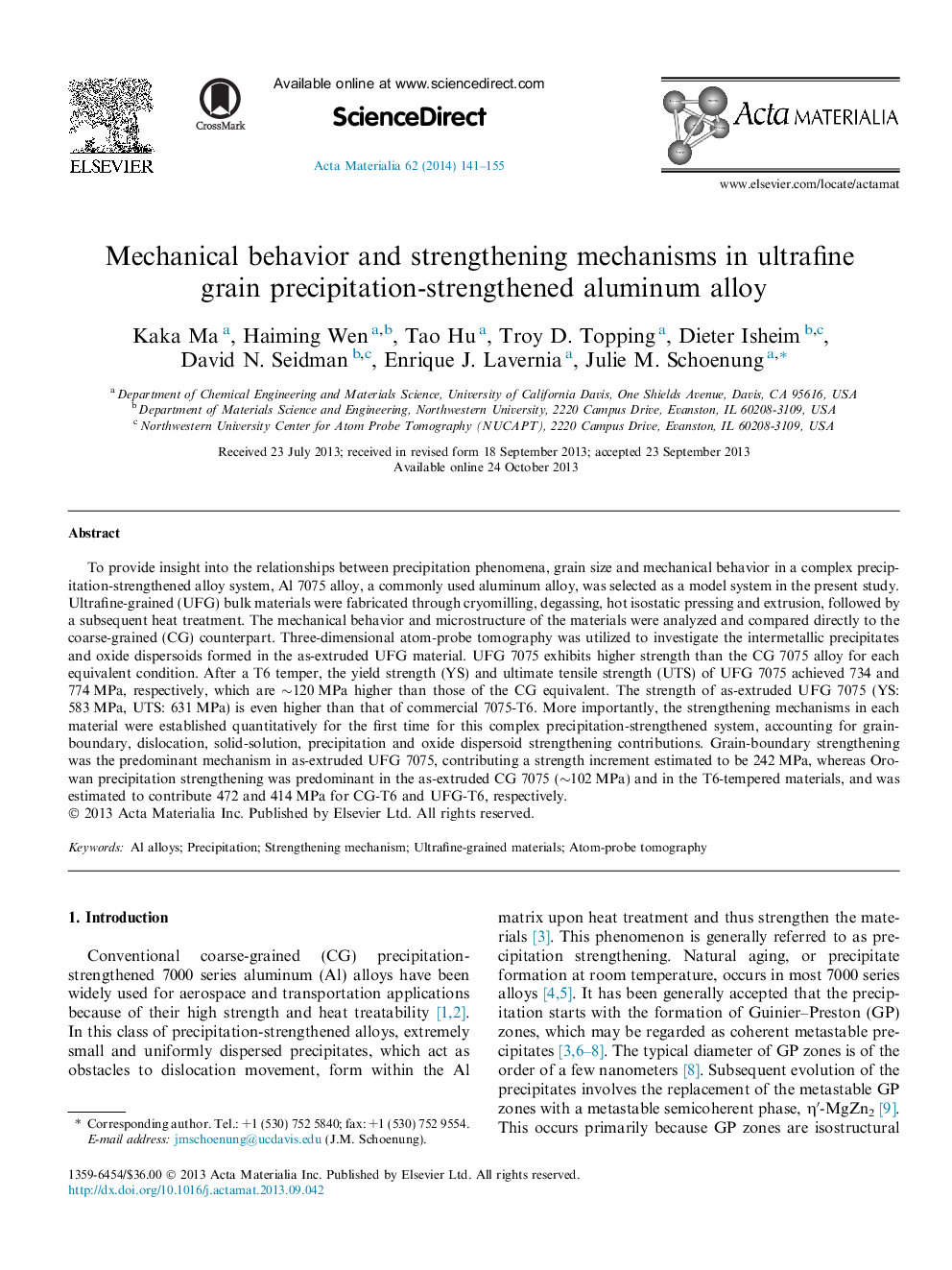| Article ID | Journal | Published Year | Pages | File Type |
|---|---|---|---|---|
| 1445969 | Acta Materialia | 2014 | 15 Pages |
To provide insight into the relationships between precipitation phenomena, grain size and mechanical behavior in a complex precipitation-strengthened alloy system, Al 7075 alloy, a commonly used aluminum alloy, was selected as a model system in the present study. Ultrafine-grained (UFG) bulk materials were fabricated through cryomilling, degassing, hot isostatic pressing and extrusion, followed by a subsequent heat treatment. The mechanical behavior and microstructure of the materials were analyzed and compared directly to the coarse-grained (CG) counterpart. Three-dimensional atom-probe tomography was utilized to investigate the intermetallic precipitates and oxide dispersoids formed in the as-extruded UFG material. UFG 7075 exhibits higher strength than the CG 7075 alloy for each equivalent condition. After a T6 temper, the yield strength (YS) and ultimate tensile strength (UTS) of UFG 7075 achieved 734 and 774 MPa, respectively, which are ∼120 MPa higher than those of the CG equivalent. The strength of as-extruded UFG 7075 (YS: 583 MPa, UTS: 631 MPa) is even higher than that of commercial 7075-T6. More importantly, the strengthening mechanisms in each material were established quantitatively for the first time for this complex precipitation-strengthened system, accounting for grain-boundary, dislocation, solid-solution, precipitation and oxide dispersoid strengthening contributions. Grain-boundary strengthening was the predominant mechanism in as-extruded UFG 7075, contributing a strength increment estimated to be 242 MPa, whereas Orowan precipitation strengthening was predominant in the as-extruded CG 7075 (∼102 MPa) and in the T6-tempered materials, and was estimated to contribute 472 and 414 MPa for CG-T6 and UFG-T6, respectively.
